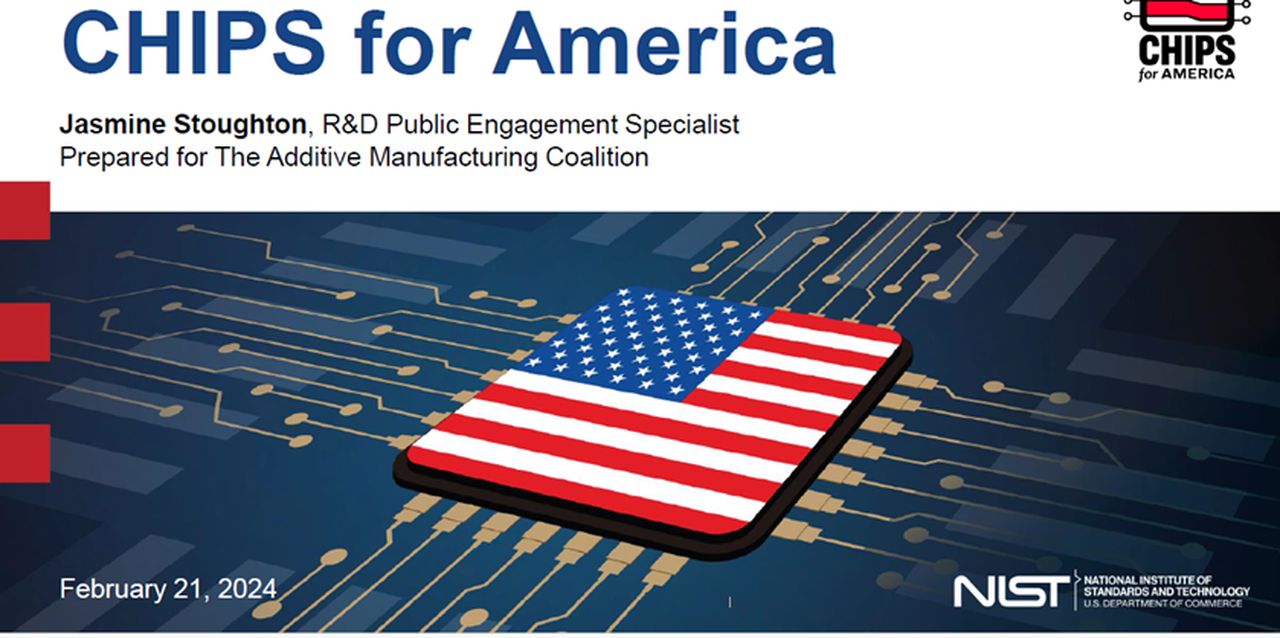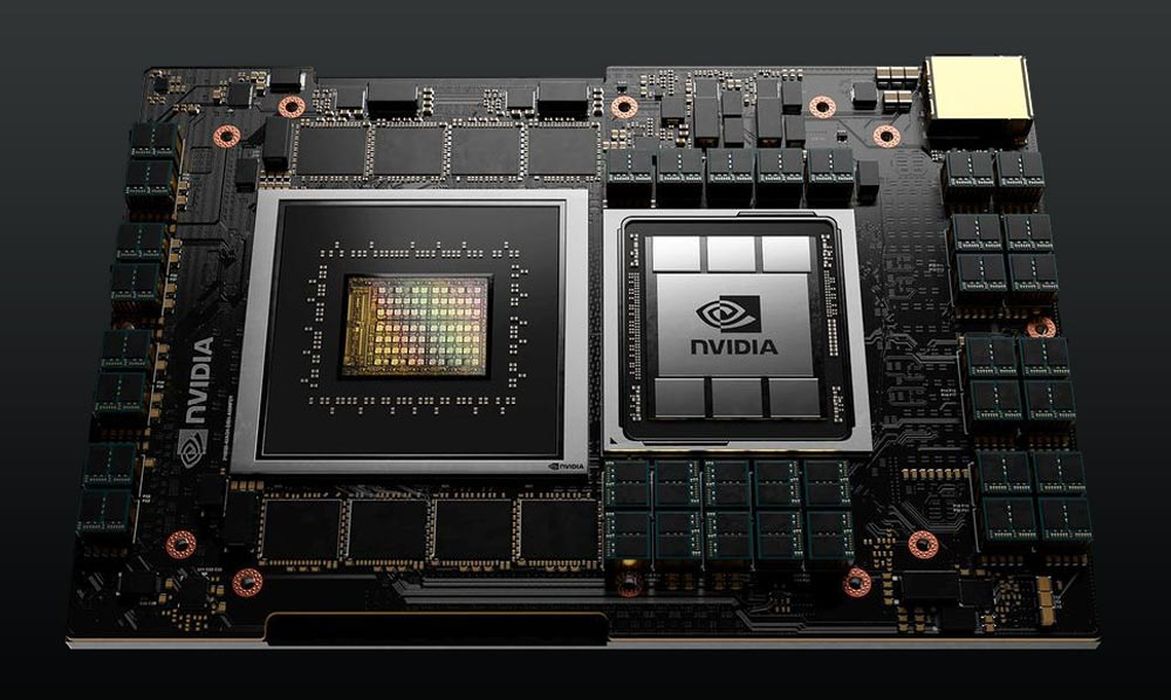
Charles R. Goulding and Preeti Sulibhavi discusses the latest CHIPS Act updates presented by the AM Coalition, highlighting the pivotal role of 3D printing in advancing semiconductor manufacturing and national security.
On February 21, 2024, the Additive Manufacturing Coalition presented a webinar on the CHIPS Act and updated participants on recent developments. The speaker was Jasmine Stoughton, R&D Public Engagement, CHIPS for America, US Department of Commerce.
Jasmine Stoughton recently joined CHIPS for America at the Department of Commerce as the R&D Public Engagement Specialist. Before CHIPS, Jasmine directed PPI’s Mosaic Project, which served to put women at the forefront of policymaking. Jasmine has worked on numerous state and local campaigns in Texas and direct-service nonprofits and served as Chief of Staff for a State Representative from Houston, Texas.
The CHIPS for America vision has a three-pronged approach. One is economic security, the second is national security, and the last is future innovation. Chips are key to the technologies and industries of the future, so we need to be at the forefront. This act will ensure long-term U.S. leadership in the sector.
According to Jasmine, US$39 billion has been allocated to the CHIPS Incentives Program. Main uses include commercial R&D facilities, preliminary memorandums of terms (PMT), and award issuances. In addition, US$11 billion has been invested in CHIPS R&D programs and projects. These programs include National Semiconductor Technology Center (NSTC) projects along with Release National Advanced Packaging Manufacturing Program (NAPMP) funding opportunities and advancing US metrology programs (the science of measurement, which is critical to the semiconductor industry).
The 3D printing industry has tremendous future growth opportunities with embedded chips, so the AM Coalition is astutely following its development.
So far, the CHIPS program has funded 29 projects with about US$109 million, with more approved projects to come.
CHIPS hopes to advance the National Advanced Packaging Manufacturing Program (NAPMP). The NAPMP will drive U.S. leadership in advanced packaging and provide the technology needed for packaging manufacturing in the United States. The NAPMP will develop critical and relevant innovations for advanced packaging technologies and accelerate their scaled transition to U.S. manufacturing entities. Within a decade, NAPMP-funded activities, coupled with CHIPS manufacturing incentives, will establish a vibrant, self-sustaining, profitable, high-volume, domestic, advanced packaging industry where advanced-node chips manufactured in the U.S. are packaged in the U.S. It is expected that the technology developed to be leveraged in new applications and market sectors and, at scale.
There will also be a CHIPS Manufacturing USA Institute that will use Digital Twins for CHIPS and packaging manufacturing projects. For general planning, the minimum expected NIST commitment is roughly US$200 million over a five-year period. Digital Twinning is expected to reduce the time and cost for semiconductor development and manufacturing and expand access to digital twin tools, solutions and frameworks.
The Semiconductor Industry
GlobalFoundries will receive US$3.1 billion in federal grants and loans to expand its Malta, New York computer chip plant and renovate a factory in Vermont. The focus will be on the automotive and other key industries that have embedded electronics. This is a ripe opportunity for the 3D printing industry to get involved in as it makes sense to 3D print such products.
NVIDIA’s unique position with high-performance chips, should not be overlooked. NVIDIA’s solutions include AI workflows, data analytics, generative AI, edge computing, digital twins, augmented and virtual reality, trials and labs among others. Product offerings include gaming, AI workstations, data processing units (DPUs) and SuperNICs, graphics processing units (GPUs), and embedded systems. CEO Jensen Huang, of NVIDIA, feels that unless China has some access, it will be forced to develop its own technology, which will remove it from U.S. domination. As other countries are striving to develop their own technologies and semiconductor manufacturing capabilities, the US must strive to become a global leader and set an example.

Most recently, Intel announced that it will be producing custom chips, designed by Microsoft and for Microsoft, as part of a US$15 billion collaboration. This announcement was made during Intel’s Foundry event and although neither Intel nor Microsoft identified key industries, they did indicate that there would be in-house designs for processors and AI accelerators.
Intel’s new foundry plans come as more companies seek to produce their own self-designed chips, but it still faces challenges. Intel recently pushed back the opening of a US$20 billion Ohio chip plant to 2026 — it was originally slated for 2025 — citing a slow chip market and delays in government grants.
Other semiconductor companies with AI chip-making capabilities include AMD, Broadcom, and Marvell Technology.
The Research & Development Tax Credit
The now permanent Research & Development Tax Credit (R&D) Tax Credit is available for companies developing new or improved products, processes and/ or software.
3D printing can help boost a company’s R&D Tax Credits. Wages for technical employees creating, testing and revising 3D printed prototypes can be included as a percentage of eligible time spent for the R&D Tax Credit. Similarly, when used as a method of improving a process, time spent integrating 3D printing hardware and software counts as an eligible activity. Lastly, when used for modeling and preproduction, the costs of filaments consumed during the development process may also be recovered.
Whether it is used for creating and testing prototypes or for final production, 3D printing is a great indicator that R&D Credit eligible activities are taking place. Companies implementing this technology at any point should consider taking advantage of R&D Tax Credits
Conclusion
The key players in the industry are defining how the semiconductor race will go. The AM Coalition webinar provided the landscape in which they will be doing so and how 3D printing can be a pivotal partner in these national economic, security and technological goals.
